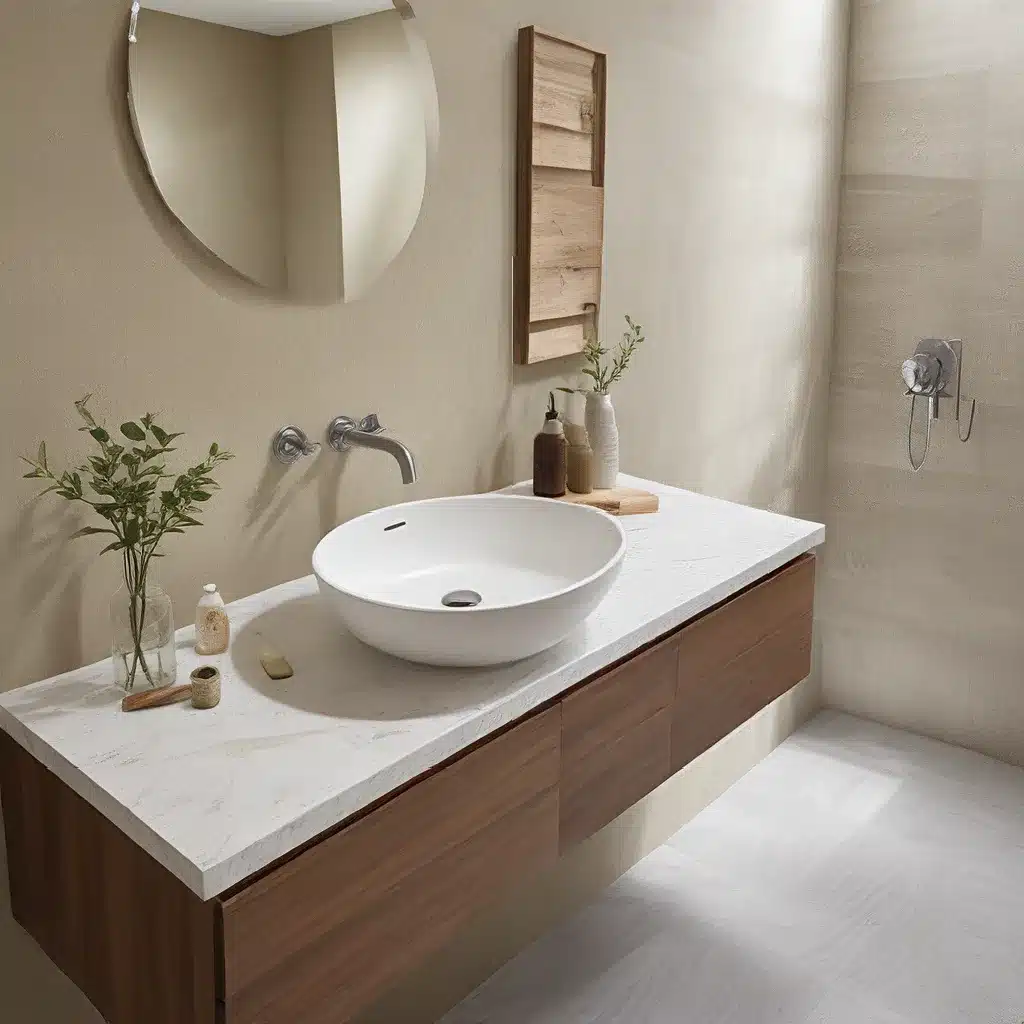
In an era of growing environmental consciousness, the demand for eco-friendly bathroom fixtures has never been higher. As homeowners and designers seek to create more sustainable living spaces, the humble washbasin has emerged as a prime area of focus. From material selection to installation and maintenance, there are a wealth of green options available to transform your bathroom into an oasis of environmental responsibility.
Choosing Sustainable Washbasin Materials
When it comes to washbasin design, the choice of materials plays a pivotal role in determining the eco-friendliness of the fixture. Traditional materials like porcelain and ceramic have long been staples in the bathroom, but they come with their own environmental drawbacks. Porcelain, for instance, requires energy-intensive firing processes and can be difficult to recycle.
Increasingly, homeowners are turning to more sustainable alternatives that minimize their environmental impact. Natural stone, such as marble and granite, offer a stunning and durable option that can be sourced and processed in a more eco-conscious manner. These materials often require less energy-intensive manufacturing processes and can be repurposed or recycled at the end of their lifespan.
Another popular choice for the eco-minded consumer is bamboo. This rapidly renewable resource is not only visually striking but also incredibly durable and water-resistant. Bamboo washbasins, often paired with matching cabinetry, provide a seamless and sustainable solution for the modern bathroom.
For those seeking a more innovative approach, recycled glass and composite materials are also gaining traction in the market. Recycled glass basins, crafted from reclaimed bottles and jars, offer a unique aesthetic while diverting waste from landfills. Composite materials, such as engineered quartz or solid surface, can be manufactured using a blend of natural and recycled components, resulting in a low-impact product.
When selecting a washbasin, be sure to research the environmental certifications and production processes of the various materials to ensure you’re making an informed, eco-friendly choice.
Eco-Friendly Washbasin Installation
Once you’ve settled on the perfect sustainable washbasin, the installation process can also be tailored to minimize your environmental impact. Plumbing fixtures play a crucial role in the overall efficiency of your bathroom, and there are several ways to ensure your new washbasin operates in an eco-friendly manner.
Low-flow faucets and aerators are a simple yet effective way to reduce water consumption without compromising the functionality of your washbasin. These innovative fixtures use advanced technology to deliver the same satisfying water flow while using significantly less H2O, helping to conserve this precious resource.
Another consideration for eco-conscious homeowners is the use of water-efficient drain systems. Traditional sink drains can sometimes become clogged with hair and debris, leading to water waste as you wait for the basin to empty. Installing a drain strainer or hair catch can help prevent these clogs, reducing the need for harsh chemical drain cleaners and the associated environmental impact.
When it comes to the actual installation process, minimizing demolition and repurposing existing materials can go a long way in reducing waste. Salvaging and incorporating old cabinetry or plumbing fixtures into your new washbasin setup not only saves resources but also adds a touch of character to your bathroom design.
Maintaining an Eco-Friendly Washbasin
Caring for your sustainable washbasin doesn’t have to be a chore. In fact, adopting green cleaning practices can help maintain the beauty and functionality of your fixture while minimizing your environmental footprint.
Homemade cleaning solutions, such as a mixture of baking soda and vinegar, provide a powerful yet gentle way to tackle soap scum, hard water stains, and other buildup. These natural ingredients are not only effective but also biodegradable and non-toxic, ensuring that your washbasin cleaning routine is as eco-friendly as the fixture itself.
For tougher jobs, a lemon-based cleaner or a steam cleaning approach can be highly effective. The citric acid in lemons acts as a natural degreaser and disinfectant, while steam cleaning utilizes the power of heat to break down grime without the need for harsh chemicals.
When it comes to maintaining the long-term appearance of your washbasin, a periodic polish with a food-grade mineral oil or eco-friendly sealant can help preserve the material’s luster and protect against stains and scratches. These gentle treatments not only keep your fixture looking its best but also contribute to its overall durability and longevity.
By adopting these sustainable maintenance practices, you can ensure that your eco-friendly washbasin continues to serve as a shining example of your commitment to environmental responsibility, elevating the entire bathroom experience.
Embracing the Future of Sustainable Sinks
As the demand for green living continues to grow, the bathroom industry has risen to the challenge, offering a wealth of innovative and eco-friendly washbasin solutions. From natural stone and bamboo to recycled glass and composite materials, the options for sustainable sinks are more diverse and accessible than ever before.
By carefully selecting your washbasin, prioritizing water-efficient installation, and maintaining your fixture with green cleaning methods, you can create a bathroom that not only looks stunning but also reflects your values of environmental stewardship. This holistic approach to sustainable design can have a lasting impact, transforming your personal sanctuary into a shining example of what’s possible when we embrace the future of eco-friendly bathrooms.
So, whether you’re embarking on a bathroom renovation or simply seeking to upgrade your existing space, consider the many sustainable sink solutions available and take the first step towards crafting an eco-friendly oasis that will delight and inspire for years to come.

